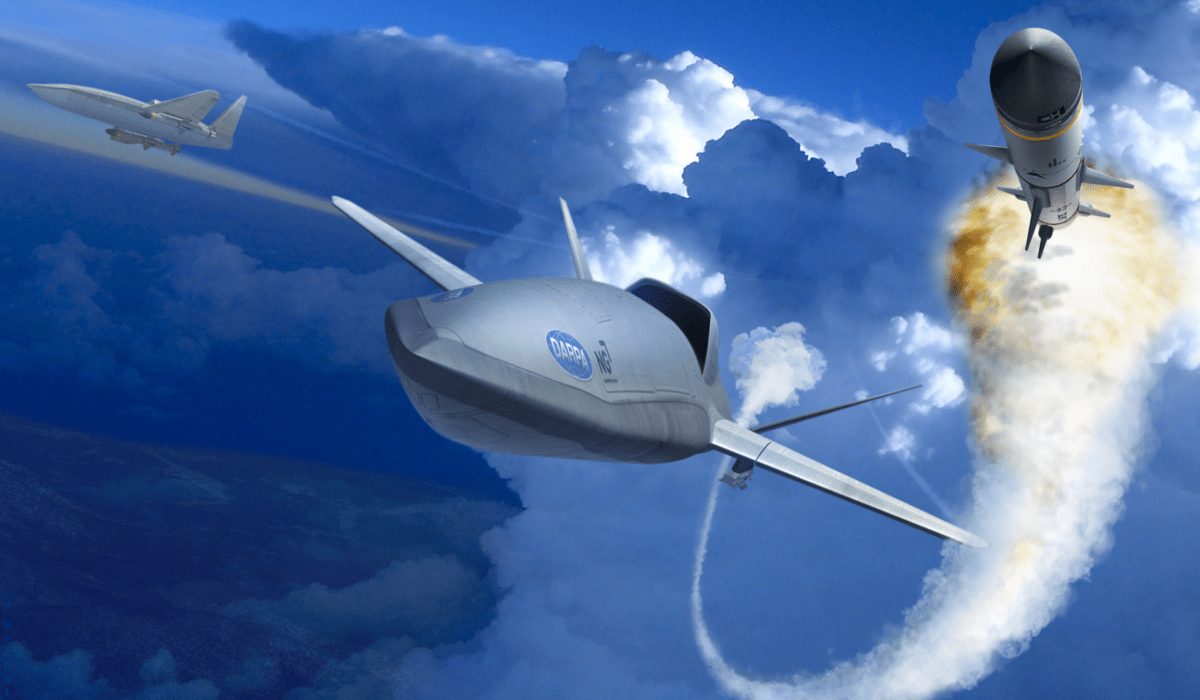[ad_1]
Aerospace giant Northrop Grumman is wasting no time in this competition.
Just two days after DARPA named it as one of three competitors for the LongShot contract, the company released an image of its concept for an air-launched unmanned aircraft system (UAS), Aviation Week reported.Â
Imagine an unmanned aircraft, speeding ahead of its launch aircraft, that itself can fire multiple air-to-air intercept missiles that can seek out and destroy.
No pilots to risk, just a throw-away UAS, that can potentially avoid enemy radar and return to base unharmed, to be used again.
That’s the thing about unmanned systems, they lack the romanticism of the past.
After their missions are completed — if they are lucky to return — they are duly checked out and parked in a lonely, darkened hangar.
They don’t get to go to the bar and brag about their exploits.
Nevertheless, Northrop aims to combine its skill set in digital engineering with an “extensive knowledge in advanced technology weapons, autonomous systems and strike platforms to increase weapon range and effectiveness,†said Jaime Engdahl, Northrop’s program director for kinetic weapons.Â
DARPA (Defense Advanced Research Projects Agency) selected Northrop, Lockheed Martin and General Atomics Aeronautical Systems Inc. to develop competitive designs for the LongShot program, Aviation Week reported.Â
The LongShot concept appears similar to a previous DARPA program that involved Northrop, which was known as the Flying Missile Rail. But Northrop said that program did not directly influence the company’s proposal.
“The real challenge that DARPA posed with LongShot was to investigate whether innovations in multimode propulsion can significantly increase the efficiency of delivering weapons at extended ranges, and whether that efficiency can provide significant advantage to our warfighters,†a Northrop spokeswoman said.Â
LongShot would allow fighters and bombers to take off with air-to-air missiles attached to a powered UAS that can separate and fly far ahead of the launch aircraft, Aviation Week reported.
Easier said than done, of course.
A key challenge is to complete a series of events, including finding, tracking and engaging a target at very long range with an autonomous missile launching system.Â
According to The War Zone, compared to the LongShot concept art that DARPA itself released, which shows a very cruise missile-like design, Northrop Grumman’s proposal has a more airplane-like planform.
It is also has a more traditional wing and tail configuration rather than a flying wing design, which the company has become very well known for over the years.Â
Overall, this particular design seems more consistent with a number of “loyal wingman†type drones that various other companies have in different stages of development, War Zone reported.
In particular, it has a number of very general similarities, including a v-tail and top-mounted air intake, to Kratos’ XQ-58 Valkyrie.
The US Air Force is currently conducting tests using XQ-58As as part of its Skyborg program, which is seeking to develop a suite of artificial intelligence-driven systems capable of operating loyal wingman drones and fully-autonomous unmanned combat air vehicles (UCAV), among others.
Interestingly, while Northrop Grumman’s LongShot concept has stealthy features, including a chined fuselage, it is shown carrying a pair of missiles externally, which would increase its overall radar cross-section, War Zone reported.
It’s not explicitly stated that the design is intended to carry weapons internally, but it likely does as the renderings show weapons bay doors.
Even being able to carry smaller hit-to-kill air-to-air missiles internally in a stealthy configuration would be highly beneficial.
This would give the system more flexibility and allow it to also carry outsized missiles that feature longer-range and larger warheads, such as the ones shown in the rendering, War Zone reported.
Also, the missiles depicted, one of which has a skull and crossbones sticker of some kind on its nosecone, also appear to be a previously unseen design.
Spurred by rapid technological advancements from Russia and China and an ever more dangerous and disruptive battlefield, DARPA is exploring new lethal engagement concepts by leveraging multi-modal propulsion, weapon systems that can be operationally deployed from existing fighters or bombers, Intelligent Aerospace reported.
[ad_2]
Source link













